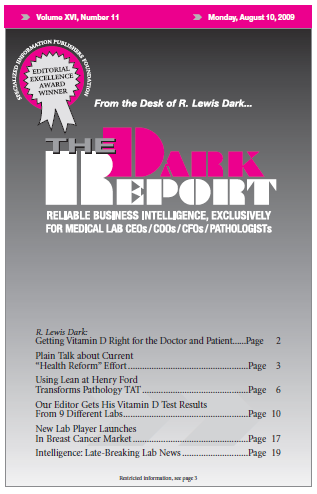CEO Summary: Editor-In-Chief Robert L. Michel gave blood for the cause and it’s another laboratory industry first! To understand what doctors and patients see as national labs use different methodologies and reference ranges to report Vitamin 25(OH) D results, his blood was tested 24 times by nine laboratories. The results were unveiled at the Executive …
Our Editor Gets His Vitamin D Test Results From 9 Different Labs Read More »
To access this post, you must purchase The Dark Report.


